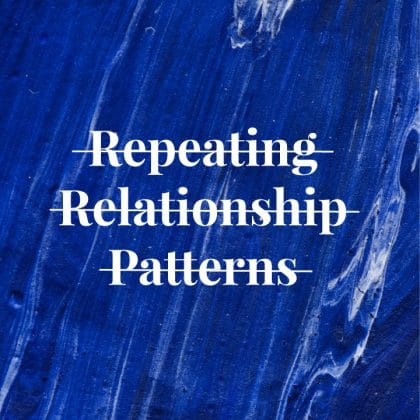Orgasms gaps exist in committed relationships, hookups and casual sex. Sex coach, Sara Tang shares tips on how to bridge the orgasm gap…
The orgasm gap, or pleasure gap, refers to the general disparity in sexual satisfaction between cisgender men and women – more specifically, the fact that women orgasm less than men during sexual interactions. Studies have shown that only 55% of women (as compared to 95% of men) are likely to have an orgasm during a sexual encounter. This gap widens with casual hook-ups and is typically narrower in committed relationships.
There are many reasons why the gap exists, a big factor being cultural ignorance surrounding the clitoris and the prioritisation of penetrative sex. Ahead, we dig deeper into the issue and what we can do to close the orgasm gap.
Read More: Male And Female Sexuality Myths Debunked
Bridging The Orgasm Gap: Prioritisation Of Male Pleasure
What do you picture when you hear the word “sex”? For many, heterosexual sex equates to penetrative intercourse, while clitoral stimulation (women’s most common means of orgasm) is often downplayed as foreplay.
This social construct, in part, exists because of the way sex is usually portrayed in mainstream media and porn (i.e. women appearing to have mind-blowing orgasms from penetrative intercourse). However, the fact of the matter is that 70-80% of women are unable to orgasm through penetration alone as it does not provide enough clitoral stimulation.
Women are simply not stimulated enough from just penetrative intercourse.
As a sex coach, this is the first thing I explain to female clients who are feeling disappointed or “broken” when orgasms seem elusive during penetrative sex. I reassure them that it’s likely they are simply not being stimulated in a way that works for them.

The Stud Vs Slut Narrative
Another cultural problem that contributes to the orgasm gap is the tendency for society to judge women more harshly than men for engaging in casual sex. Why is it that men are often admired for their many sexual conquests, whereas women are expected to protect their virtue and purity?
A double standard that holds women back from exploring their bodies and sexuality
This “stud vs slut” narrative seems to be prevalent among the more conservative societies in Asia, making it harder for them to advocate for their own pleasure – to ask for what they want. Many heterosexual women tend to feel a sense of duty or responsibility to please their male partner and in turn, neglect to focus on their own needs and desires.
So How Can We Close The Orgasm Gap?
The best way to fix the problem is for people to get educated on the topic. Many of us received a terribly limited sex education growing up that focused on reproduction and glossed over pleasure. In order to close the gap, it’s important for us all to get more familiar with the ins and outs of female sexuality and pleasure.
The social practices around sex is also something that needs to be changed. Women need to learn how to be better at asking for what they want and communicating to their partners what gives them pleasure. Attending an online coaching programme, such as my Better in Bed Foundations course, is a great way for women to get in touch with their own sexuality and break out of patterns that result in unfulfilling, lacklustre sex.
Read More: How To Love Your Vulva
 Redefine Sex
Redefine Sex
Another way to close the orgasm gap is to change how sex is defined. Sex isn’t just about intercourse, it’s about all forms of pleasure and play that brings enjoyment to both parties involved. This means putting just as much effort into providing external stimulation as internal stimulation.
While this may seem counter-intuitive in an article discussing the orgasm gap, less focus should be put on the “goal” of orgasm so both partners can relax and enjoy themselves in whatever way brings them pleasure.
 Know What You Want
Know What You Want
The women who are most likely to ensure they orgasm with a partner are those who know how get there on their own. How else will you teach someone else how you like it? I encourage anyone with a vulva to take responsibility for their own pleasure and make sure you get it, rather than hoping for it.

The key to understanding what turns you on or off and knowing exactly how you (and your clitoris) like to be stimulated is masturbation. If you’ve never used a sex toy before, you don’t need to be intimidated. There are many simple bullet-style vibrators that allow you to experience direct clitoral stimulation, and they are handy to have around either for a solo session or even when things are heating up with a partner.
That said, a huge amount of the female arousal and pleasure happens in the mind. So it’s important to put aside any worry about whether your partner is enjoying himself or if you will climax. This type of mental chatter draws you out of the moment and can make it difficult to experience the heights of pleasure.
Read More: 7 Sex Toys And Vibrators For Beginners
 Ask For What You Want
Ask For What You Want
Don’t be afraid to let your partner know what you enjoy and what you need in order to climax. It’s a great idea to have extended foreplay sessions (I like to call them play sessions) that forego the penetrative element, to give you both a chance to learn what the other likes.
It’s okay to make requests to a partner such as slowing down the pace, directing them to give you more clitoral stimulation, or even pausing so you can reach for a sex toy. Most partners want to please you, so help them by telling them what you need.
And if you’re not feeling it that night, just let them know that you don’t think you’ll orgasm – never fake it. Even if it feels easier to do so. By faking an orgasm, you send the message that whatever your partner is doing is working, which will result in them doing the same unfulfilling things repeatedly.
Advice For The Guys
Don’t take it personally if your partner didn’t orgasm from penetration. Ensure she is getting a healthy amount of direct clitoral stimulation instead, whether manually, orally or with the help of a vibrator.
Slow things down to build tension and arousal. Most women need a longer time to build-up from arousal to climax than men, so be patient. Instead of heading straight for the genitals, start by stimulating the rest of her body. Maybe try a simple massage to ensure she’s relaxed and focused on your touch, rather than other things going on in her day.
Be attentive to what she needs. Approach talking about sex away from the bedroom when the pressure is off, and then check in again during sex with a “Like this?” or “How does this feel?” during. But just be wary that too many questions can take your partner out of the moment. Don’t assume that every woman enjoys the same things. Sex isn’t a one-size-fits-all type of activity.

Find The Balance
At the heart of every great sexual relationship is consistent communication, mutual respect and a balance of giving and receiving pleasure. As long as you approach every sexual encounter with the knowledge that each party deserves equal enjoyment from this experience, you and your partner are much more likely to have a satisfying sex life.
Read More: Could Sex Help You Sleep Better?
Editor’s Note: “The Orgasm Gap: What Is It And How Can I Close It?” was first published in October 2020 and was most recently updated in March 2023 by Team Sassy.
Main image courtesy of Monika Kozub via Unsplash, image 1 courtesy of Womanizer Toys via Unsplash, image 2 courtesy of We-Vibe Toys via Unsplash, image 4 courtesy of Getty.





 Eat & Drink
Eat & Drink



 Travel
Travel



 Style
Style



 Beauty
Beauty



 Health & Wellness
Health & Wellness



 Home & Decor
Home & Decor



 Lifestyle
Lifestyle

 Weddings
Weddings









